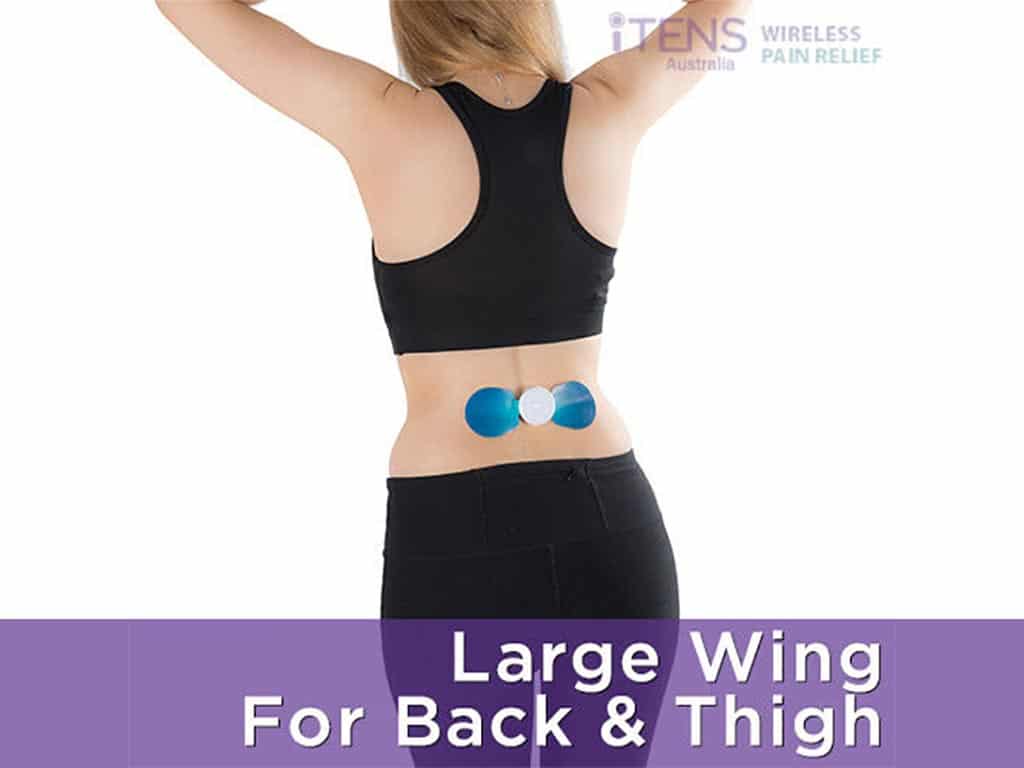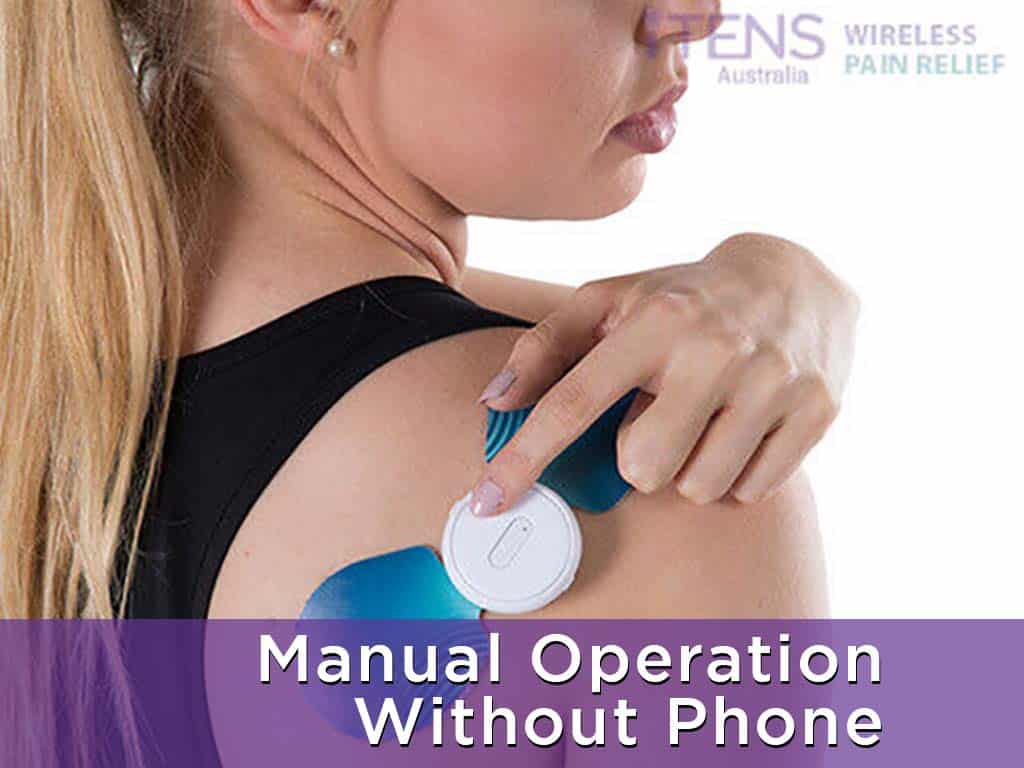
TENS, or Transcutaneous Electrical Nerve Stimulation for back pain, is a method of pain relief that involves the use of low-voltage electrical currents. Accordingly, TENS works by blocking pain signals and stimulating the release of endorphins. Furthermore, to apply TENS therapy, begin by locating the area of the back experiencing discomfort. Then, prepare the skin and place the pads. Finally, turn on the device, adjust the stimulation parameters, and activate the treatment of pain.
Painful conditions, including back ailments, are common issues. This can greatly impact the quality of life. Traditional pain management methods may include pain control medications and physical therapy. However, they may not always provide long-term relief. TENS is a treatment option that can help manage various types of pain (whether acute or chronic pain), including back discomfort. This article will present TENS for back pain, how it works, and how to apply it.
What is Transcutaneous Electrical Nerve Stimulation for Back Pain?
Back discomfort is a common chronic condition characterised by tension or stiffness in the lower or upper back. It may arise from various factors, such as disc herniation or spinal stenosis. The sensation of the ailment can range from mild to severe. Fortunately, there is TENS therapy. It can treat a wide range of conditions like postoperative pain, neck pain, diabetic neuropathy, osteoarthritis pain, primary dysmenorrhea, musculoskeletal pain, neuropathic pain, including back ailment.
Transcutaneous Electrical Nerve Stimulation for back pain uses an electrical device to send electrical impulses to the body. It streams electric currents through electrode patches placed on the skin. Accordingly, pain clinics, health professionals, and physical therapists often recommend the use of TENS. Also, individuals suffering from back discomfort may utilise TENS at home for the relief of pain.
There are two types of TENS devices: wired and wireless. Wired TENS units typically feature electrode pads connected to the central machine via wires. Meanwhile, wireless TENS units eliminate the need for lead cables. Nevertheless, users can control the electric stimulation manually or on a smartphone via Bluetooth. These devices often feature adjustable settings and pre-set programs.
Clinical Evidence
- Efficacy of TENS therapy: Research treatment studies have demonstrated quality evidence that TENS can be a valuable non-invasive method for managing back ailments.
- Comparison with placebo: Clinical trials have compared the effects of TENS with a placebo. The results of the critical review indicate that TENS therapy can lead to a reduction in back discomfort.
- Long-term benefits: Evidence suggests that TENS therapy may provide sustained pain relief.
- Mechanistic insights: Scientific investigation (systematic reviews) provides valuable insight into the underlying mechanisms of action of TENS.
- Compliance and adherence: Individual studies from patients find TENS as a feasible and acceptable treatment option.

How a Transcutaneous Electrical Nerve Stimulation for Back Pain Works
Transcutaneous Electrical Nerve Stimulation for back pain works by leveraging various physiological and inhibitory mechanisms. Foremost, electrical impulses from TENS are thought to stimulate the production and release of endorphins. These are the natural pain-relieving chemicals of the body. It binds to opioid receptors, providing effective analgesia. Also, it can induce a sense of well-being.
TENS therapy also capitalises on the pain gate mechanism. According to this, non-painful sensory input can close the “gates” to painful input. This essentially limits or blocks the transmission of pain signals to the brain. Nevertheless, TENS may activate non-painful sensory nerves. This effectively closes the “pain gates” and inhibiting the transmission of pain messages. Hence, it reduces the sensation of discomfort.
Furthermore, the electrical stimulation may contribute to the dilation of blood vessels. This vasodilation effect can lead to increased blood flow. Thus, it promotes the delivery of oxygen and nutrients to the tissues. Additionally, the electrical pulses can stream in low and high frequencies. Low-frequency TENS operates below 10 Hz, while high-frequency TENS operates above 50 Hz.
Benefits
TENS presents several benefits. Firstly, TENS therapy is non-invasive and drug-free. It is a treatment option that does not require invasive procedures or pharmaceutical interventions. Secondly, TENS units provide adjustable settings. This allows individuals to customise the frequency, intensity, and duration of the electric stimulation.
Thirdly, most TENS units are compact and lightweight. This portability enables people to undergo treatment at home, at work, or on the go. Fourthly, using TENS is cost-effective. It eliminates the ongoing cost of medication, invasive procedures, or frequent visits to pain clinics. Finally, TENS can complement other treatment solutions.

How to Apply Transcutaneous Electrical Nerve Stimulation for Back Pain
The application of Transcutaneous Electrical Nerve Stimulation for back pain involves several key steps. Begin by selecting the appropriate size and type of electrodes. Then, identify the treatment area and prepare the skin over it. Next, the application of electrodes should be affixed to the skin in strategic positions. Nevertheless, following the proper electrode placement is crucial in this step.
Subsequently, connect the electrode patches to the central machine using lead cables or to a smartphone via Bluetooth. Once the connections are in place, turn on the TENS unit. This may prompt individuals to adjust the settings or choose a pre-set program for back ailment. Professionals recommend starting with the lowest setting and gradually increasing it to a comfortable intensity.
During TENS therapy, it is essential to monitor any sensations that may arise. A buzzing and tingling sensation is normal. TENS sessions typically last for a predetermined duration, often ranging from 15 to 30 minutes. Once the treatment is complete, turn off the TENS unit and carefully remove the electrode pads. Store the device and accessories in a safe place for future use.
Electrode Placement
Begin by locating the area of the back experiencing discomfort. Then, clean and dry the skin over it. Remove oils, lotions, and dirt. This ensures optimal adhesion and conduction of electrical currents. Next, strategically position the electrode pads around the area of discomfort. Generally, for a back ailment, place the pads on either side of the discomfort.
Once the electrodes are in place, firmly press the pads to securely attach them to the skin. Additionally, maintain proper distance between the pads (at least one inch). Avoid placing the electrode pads on sensitive areas, such as the spinal cord, broken skin, or open wounds.
Conclusion
In summary, the back ailment may arise from various factors like disc herniation and spinal stenosis. Fortunately, Transcutaneous Electrical Nerve Stimulation for back pain is an effective treatment. It is a therapy that uses a device to send electrical currents to the body. Accordingly, this treatment provides clinical evidence and quality evidence. Nevertheless, TENS works by blocking the pain signals, triggering the release of endorphins, and improving blood flow. The currents can also stream in low and high frequencies.
TENS therapy presents several benefits. It is non-invasive, drug-free, customisable, portable, cost-effective, and can complement other treatment solutions. Furthermore, the application of TENS involves several simple steps. Begin by locating the area of the back experiencing discomfort. Then, prepare the skin and place the pads. Finally, turn on the TENS device and adjust the settings. However, adhering to the proper electrode placement is essential for optimal and effective TENS therapy experience.







